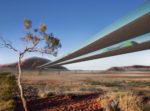Greening the Concrete Jungle: How to Make Environmentally Friendly Cement

Cement is the world’s most widely used material apart from water, largely because it is the key ingredient in concrete, the world’s favourite building material. But with cement’s success comes a huge amount of greenhouse emissions. For every tonne of cement produced in Australia, 0.82 tonnes of CO₂ is released. That might not sound like much, especially when compared with the 1.8 tonnes emitted in making a tonne of steel. But with a global production of more than 4 billion tonnes a year, cement accounts for about 8% of the world’s CO₂ emissions. The electricity and heat demands of cement production are responsible for …







